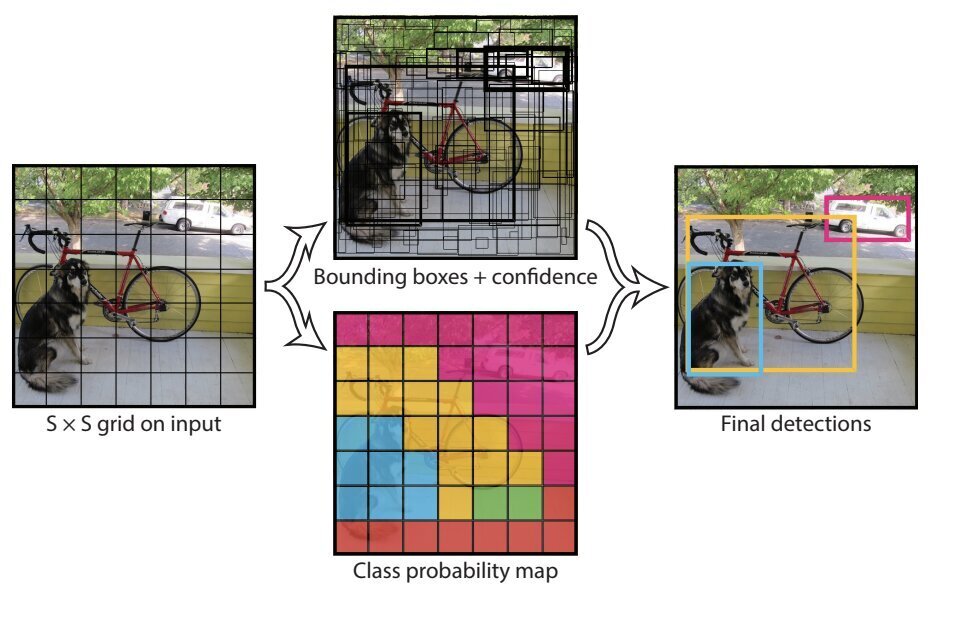YOLO (You Only Look Once)
YOLO, which stands for “You Only Look Once,” is a pioneering real-time object detection algorithm introduced by Joseph Redmon and his colleagues in 2015. Unlike traditional methods that repurpose classifiers for detection, YOLO frames the object detection task as a single regression problem, predicting bounding boxes and class probabilities directly from full images in one evaluation. This unified architecture allows YOLO to achieve remarkable speed and efficiency, processing images at 45 frames per second and even reaching up to 155 frames per second in its faster versions[1][5].
How YOLO Works
The YOLO algorithm divides the input image into an $$S \times S$$ grid. Each grid cell is responsible for predicting bounding boxes and their corresponding confidence scores for objects whose centers fall within the cell. Specifically, each cell predicts $$B$$ bounding boxes and confidence scores that indicate the likelihood of an object being present and the accuracy of the bounding box prediction. This approach eliminates the need for multiple passes over the image, significantly speeding up the detection process compared to methods like Faster R-CNN, which require multiple iterations to propose regions of interest[2][3].
Advantages of YOLO
One of the key strengths of YOLO is its speed, making it suitable for real-time applications such as video surveillance, autonomous driving, and augmented reality. Its architecture allows for efficient processing of high-resolution images without sacrificing performance. YOLO also excels in generalizing across different object shapes and sizes, although it may struggle with very small objects due to its grid-based detection mechanism[2][4].
Applications
YOLO has found extensive applications across various domains:
-
Autonomous Vehicles: Detecting pedestrians, vehicles, and road signs in real-time to enhance safety.
-
Surveillance Systems: Identifying suspicious activities or abandoned objects in crowded environments.
-
Traffic Management: Automatic recognition of license plates and monitoring traffic flow.
-
Medical Imaging: Detecting anomalies in X-rays and MRIs, aiding in early disease diagnosis[3][4].
Evolution of YOLO
Since its initial release, YOLO has undergone several iterations, each improving upon its predecessor. Subsequent versions, including YOLOv2, YOLOv3, and beyond, have introduced enhancements in accuracy and speed, further solidifying YOLO’s position as a leading object detection algorithm in the field of computer vision[1][2][4].
In summary, YOLO represents a significant advancement in the realm of object detection, combining speed and accuracy in a single, efficient framework. Its versatile applications and continual evolution make it a valuable tool in both research and practical implementations of computer vision technologies.
Further Reading
1. YOLO — You only look once, real time object detection explained | by Manish Chablani | Towards Data Science
2. YOLO Algorithm for Object Detection Explained [+Examples]
3. You Only Look Once (YOLO): What is it?
4. YOLO Object Detection Explained: A Beginner’s Guide | DataCamp
5. [1506.02640] You Only Look Once: Unified, Real-Time Object Detection


